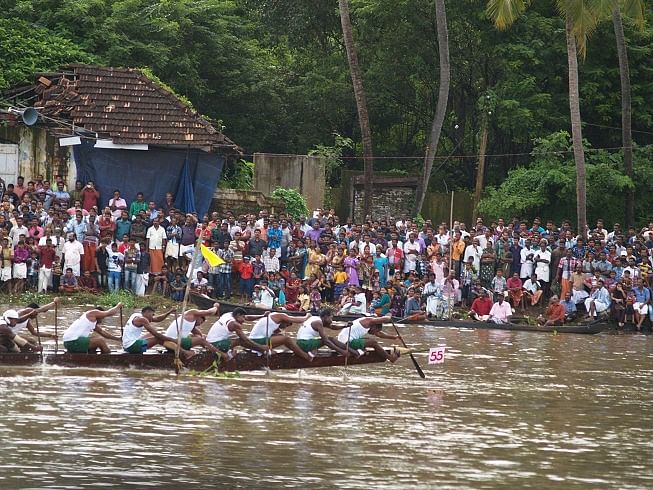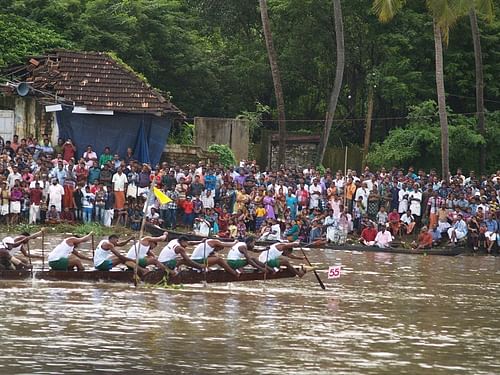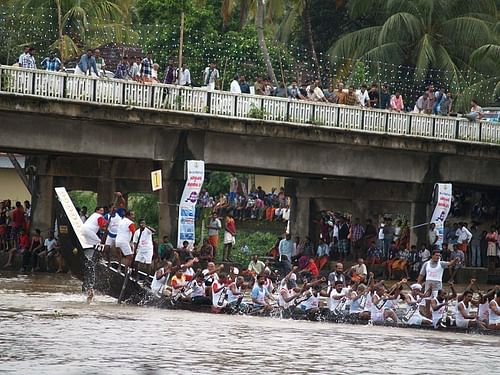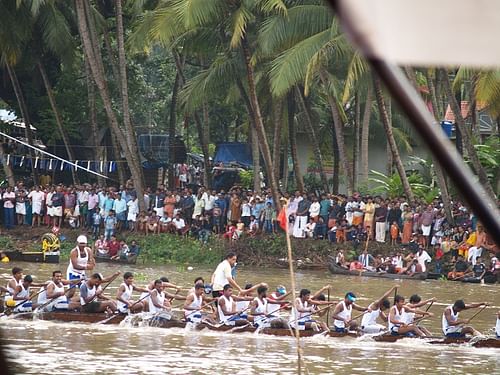
An alternate model for running a sports centre
Buoyed by the success of conducting one of Kerala’s biggest boat races, panchayat organizers have proposed the setting up of a rowing and kayaking centre to produce international level oarsmen.

Scenes from one of Kerala’s biggest boat races, ‘Jalolsavam’, at Kandassankadavu in Thrissur, which marked the culmination of a ten-day celebration of the harvest festival Onam on August 30. The boat race was held for the Chief Minister’s trophy
If the proposed centre does materialize, it will offer an interesting model of a grassroots-up approach to competitive sport. Most competitive sports in India are run by a top-down model: driven by associations and with little connect to the general population. People’s sports, on the other hand, often see far greater turnouts, but their potential hasn’t been harnessed to produce top-level sportsmen often enough. The success of Indian wrestling, it may be argued, is more due to the fact that it is a people’s sport in states like Haryana and Punjab, and it is this tradition that has been responsible for spurring on competitors. Like other development schemes, sports programmes may be more successful if local administrative units are engaged.

Scenes from one of Kerala’s biggest boat races, ‘Jalolsavam’, at Kandassankadavu in Thrissur, which marked the culmination of a ten-day celebration of the harvest festival Onam on August 30. The boat race was held for the Chief Minister’s trophy
The annual Jalolsavam (Water Festival), held last week along the picturesque Canoli Canal in Thrissur District, saw a massive turnout of spectators cheering on the traditional race boats. The show-stealers were the traditional ‘Chundan Valloms’ or snake boats, which each measure over a 100 feet in length and are powered by 114 oarsmen. This year, six snake boats participated in the contest for the Chief Minister’s Trophy, which led organizers to claim that this was Kerala’s second biggest boat race after the popular Nehru Trophy Race at Aranmula.
Races were held in three categories and involved 26 boats from Thrissur and its neighbouring districts. One frequent theme among the speakers was that Kerala, with its water canals and rivers, and an ancient tradition of boat racing, should be able to produce international oarsmen capable of contesting for Olympic medals.

Scenes from one of Kerala’s biggest boat races, ‘Jalolsavam’, at Kandassankadavu in Thrissur, which marked the culmination of a ten-day celebration of the harvest festival Onam on August 30. The boat race was held for the Chief Minister’s trophy
“There are 33 medals at stake in rowing events at the Olympics,” reasons VN Surjith, President of Manalur Panchayat, who was credited with reviving the water festival last year. The festival began in 1956 – the year of the state’s formation – but was discontinued for five years due to cash constraints. “Our state has the water resources and our people are built for this sport,” Surjith, also the President of the District Canoeing and Kayaking Association, says. The panchayat has submitted a proposal to the state government and is awaiting its assent. “There are great possibilities,” says Surjith. “We have submitted plans for a multipurpose centre. We have plans to hire coaches and have a full fledged centre to produce competitive rowers and kayakers. Football can give you one medal at best, but in rowing and kayaking, there are 33 at stake. We can also include adventure sport at our centre to boost tourism. I want to make the annual water festival world-famous.”